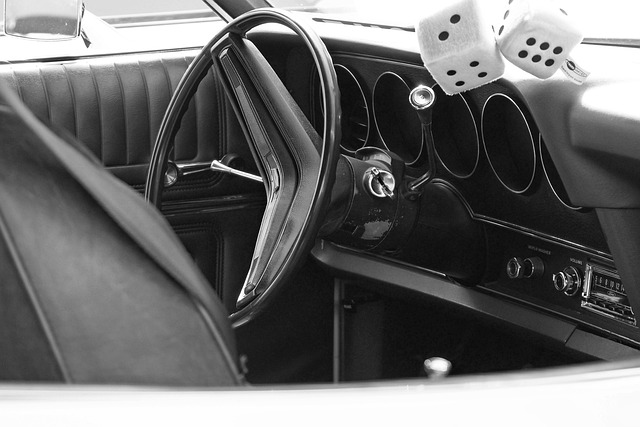Learn how to register your car in California with our comprehensive guide. This step-by-step process walks you through understanding the requirements, gathering essential documents for DMV VIN verification, and the registration procedure at a California Department of Motor Vehicles (DMV) office. We’ll also cover calculating fees and receiving your vehicle registration and license plate stickers. Ensure a smooth transition to California roads by following these simple steps, including key considerations for DMV VIN verification.
- Understand the Requirements for Car Registration in California
- Gather Necessary Documents for DMV Vin Verification
- The Step-by-Step Process of Registering Your Vehicle at the DMV
- Calculate and Pay the Required Registration Fees
- Receive Your Vehicle Registration and License Plate Stickers
Understand the Requirements for Car Registration in California

Before registering your car in California, it’s crucial to understand the requirements set by the Department of Motor Vehicles (DMV). The process involves several key steps, including a thorough vehicle inspection and verification of your car’s unique identifier—the Vehicle Identification Number (VIN). In California, the DMV conducts a VIN verification to ensure that your car meets all safety and environmental standards. This step is essential for issuing a registration and license plate.
A mobile vin verifier can facilitate this process by providing on-site inspection services, ensuring convenience and timely completion. The VIN inspection checks critical components of your vehicle, confirming its age, make, model, and overall condition. By adhering to these requirements and utilizing available tools like mobile vin verification, you streamline the car registration process in California, making it more efficient for both owners and DMV officials.
Gather Necessary Documents for DMV Vin Verification

Before you can register your car in California, you’ll need to go through a crucial step known as DMV VIN verification. This process ensures that your vehicle’s identification number (VIN) is accurate and matches the records held by the Department of Motor Vehicles (DMV). To facilitate this, gather all the necessary documents that prove ownership and identity. These typically include:
1. A valid driver’s license or state-issued ID card.
2. The vehicle’s registration certificate from its previous state of residency.
3. Proof of insurance, demonstrating you have the appropriate coverage for your car.
4. If applicable, a bill of sale or purchase agreement showing the transfer of ownership.
5. For classic cars or those with unique circumstances, additional documents might be needed.
Additionally, consider utilizing services like mobile VIN inspection or hiring a mobile vin verifier to streamline this process. These professional services can visit you at your location, perform the VIN verification on-site, and provide immediate results, making registration smoother for out-of-state transfers or when dealing with less common vehicle types.
The Step-by-Step Process of Registering Your Vehicle at the DMV

Registering a car in California involves several straightforward steps, ensuring your vehicle is safe for the road and compliant with local regulations. The process begins with a comprehensive vehicle inspection, including a critical DMV VIN verification. This step is crucial to confirm the identity of your car using its unique Vehicle Identification Number (VIN). You can facilitate this process by utilizing a mobile VIN inspection service, which provides convenience and saves you a trip to the DMV.
Once your vehicle passes the inspection, you’ll need to gather essential documents, such as proof of ownership, insurance, and identification. With these in hand, visit your nearest California DMV office. There, staff will guide you through the registration process, updating your vehicle’s records and issuing a new registration certificate. This ensures your car is legally registered and ready for California’s roads.
Calculate and Pay the Required Registration Fees

To register your car in California, calculating and paying the correct registration fees is a crucial step. The cost varies depending on several factors, including the make and model of your vehicle, its weight, and whether it’s new or used. You can use the DMV’s online fee calculator to estimate these charges accurately. Once you’ve determined the total amount, you’ll need to pay via credit card, debit card, or a money order.
A key part of this process involves completing a DMV VIN verification, ensuring your vehicle’s unique identification number (VIN) is accurate and matches the data on file. With modern technology, many California residents opt for convenient mobile VIN verification services using apps or online platforms. These mobile VIN inspection tools streamline the process by allowing you to verify your car’s details remotely before submitting your registration application.
Receive Your Vehicle Registration and License Plate Stickers

After completing the registration process, it’s time to receive your vehicle’s official registration documents and license plate stickers. This crucial step involves a few simple actions. First, ensure that you have passed all necessary inspections, including a DMV (Department of Motor Vehicles) vin verification check. This is typically done during the initial application stage but is essential for confirming your vehicle’s identity and ensuring it complies with safety standards.
Once approved, you can request your registration materials either online or in-person at a local DMV office. You’ll need to provide your vehicle’s unique VIN (Vehicle Identification Number) during this process, which can be easily verified through a mobile vin inspection or by presenting the car’s title and insurance documents. With all the required information submitted, you’ll be issued your registration certificate and stickers, allowing you to legally operate your vehicle on California roads.
Registering a car in California is a straightforward process, but understanding the requirements and gathering the necessary documents are key. By following these simple steps, including successful DMV VIN verification, you’ll have your vehicle registered and on the road legally in no time. Remember to keep your registration up-to-date and ensure your vehicle meets all safety standards for optimal driving experience and peace of mind.
